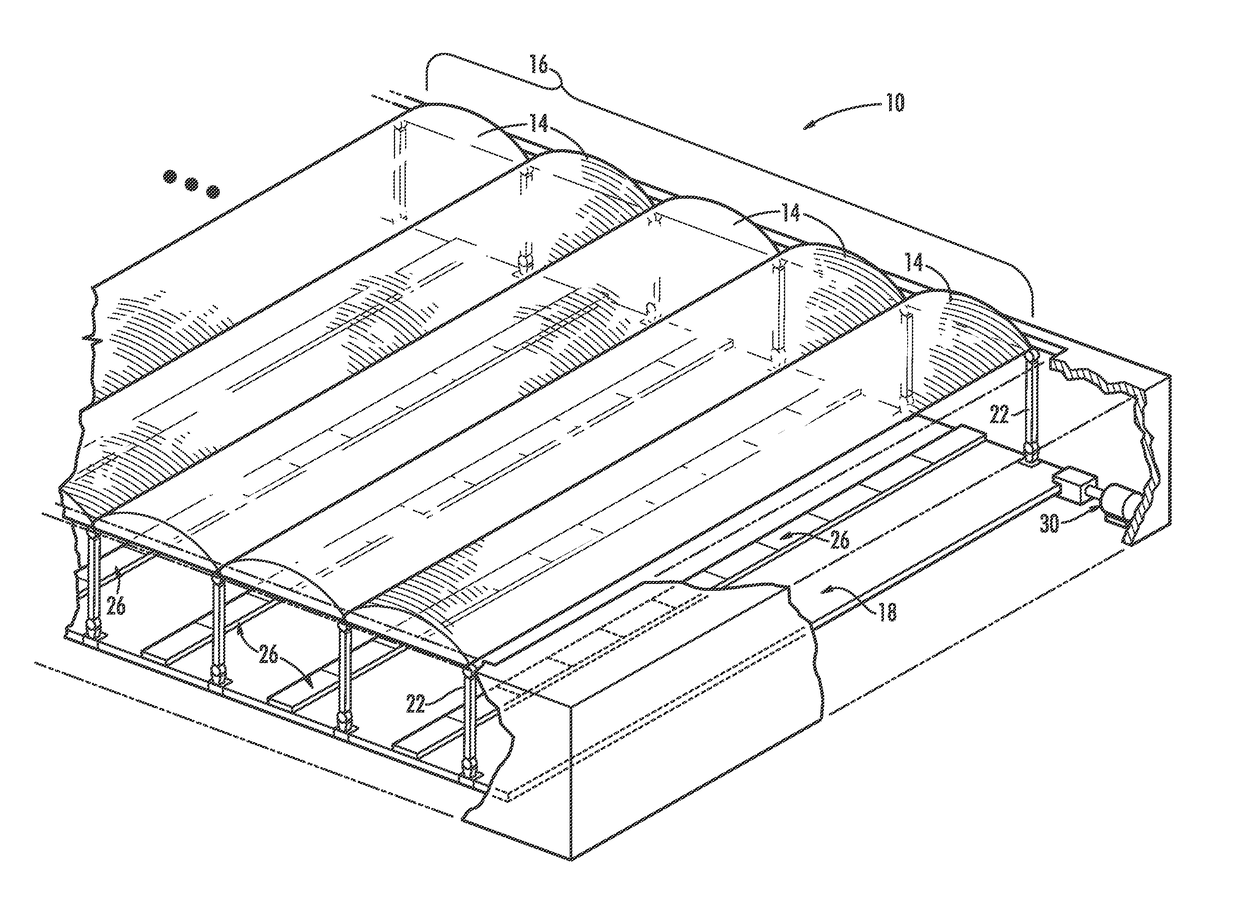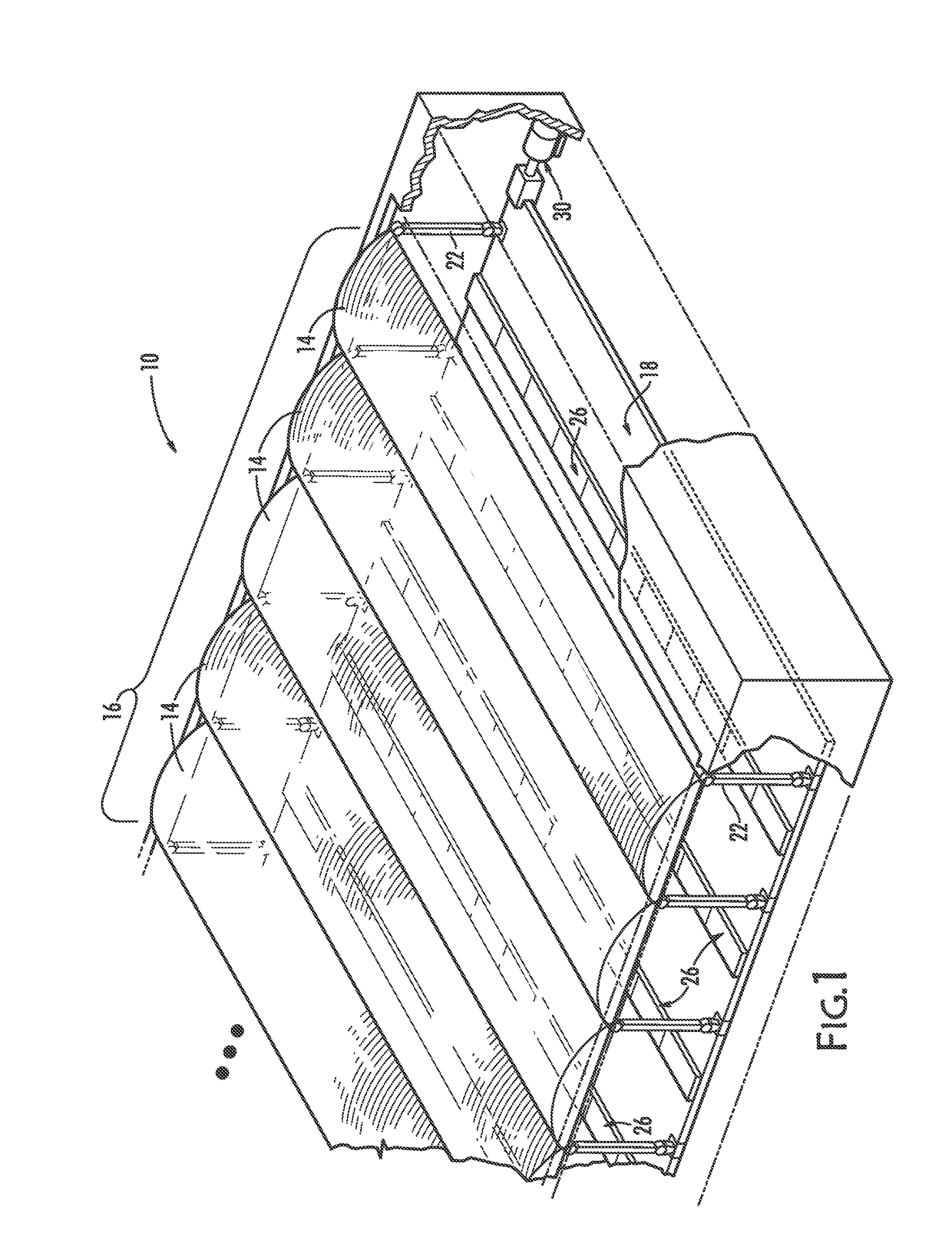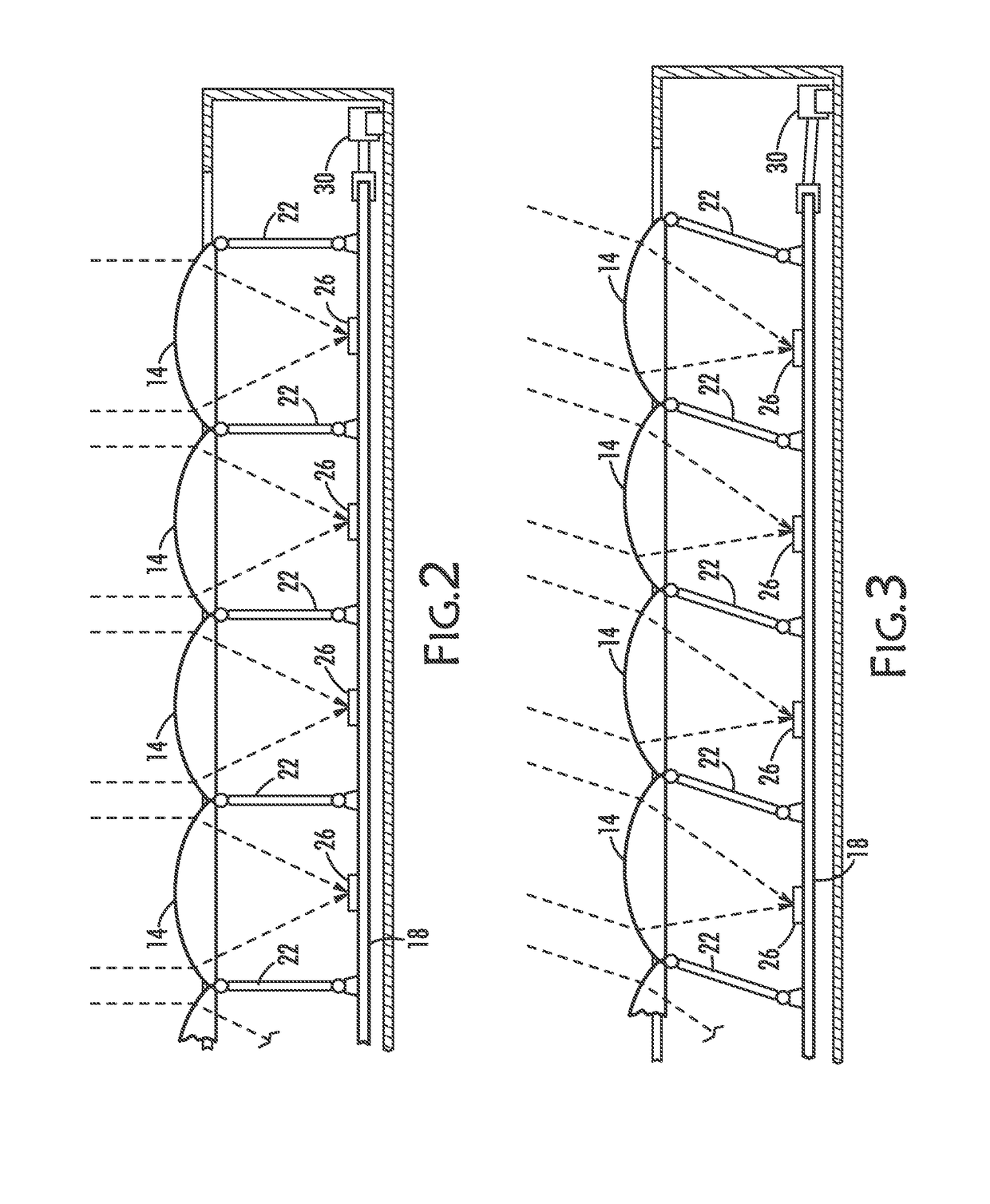Rigidly mounted tracking solar panel and method
- Summary
- Abstract
- Description
- Claims
- Application Information
AI Technical Summary
Benefits of technology
Problems solved by technology
Method used
Image
Examples
Embodiment Construction
[0026]The solar panel as disclosed may be in the form of a solar panel 10 that may be rigidly mounted to a solid surface with the proper orientation and tilt, and commence to automatically track the sun's movement and to optimize the collection efficiency of the photovoltaic material being used. Solar panel 10 may be thin: 1.5 cm-2.5 cm thick, for example, and scalable. A solar panel 10 may be a square meter, for example, and light-weight. It may use less photovoltaic material so using higher efficiency concentrator photocell materials becomes cost-effective. Its lenses can be made of any optical glass or optical plastic and may be configured as Fresnel lenses.
[0027]FIG. 1 is a perspective view of a solar panel 10 comprising plural lenses 14, arranged in an array 16 and supporting a movable panel 18 by flexible supports 22. Lens 14 in array 16 is shown as cylindrical in this illustration and has an axis of symmetry parallel with the long dimension of lens 14. In use, panel 18 would ...
PUM
 Login to View More
Login to View More Abstract
Description
Claims
Application Information
 Login to View More
Login to View More - R&D
- Intellectual Property
- Life Sciences
- Materials
- Tech Scout
- Unparalleled Data Quality
- Higher Quality Content
- 60% Fewer Hallucinations
Browse by: Latest US Patents, China's latest patents, Technical Efficacy Thesaurus, Application Domain, Technology Topic, Popular Technical Reports.
© 2025 PatSnap. All rights reserved.Legal|Privacy policy|Modern Slavery Act Transparency Statement|Sitemap|About US| Contact US: help@patsnap.com



